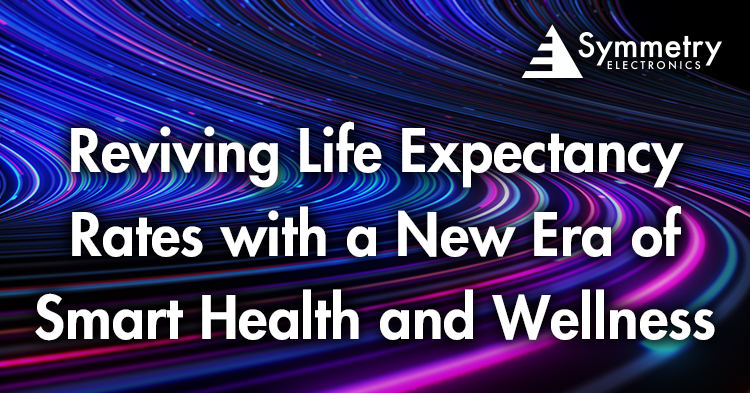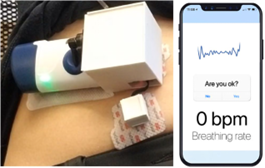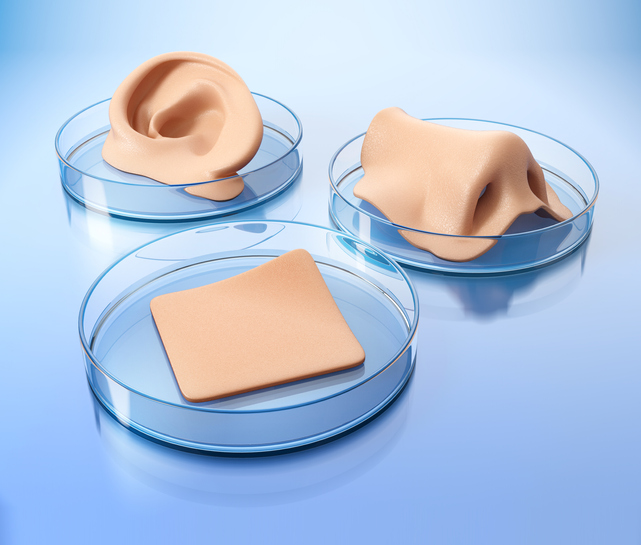- Home
- Symmetry Blog
- Reviving Life Expectancy Rates with a New Era of Smart Health and Wellness
Reviving Life Expectancy Rates with a New Era of Smart Health and Wellness
About Jari Haiston

In the wake of a global pandemic and amidst a concerning surge in drug overdoses, life expectancy in the United States is facing a decline. In fact, spanning from 2019 and 2021, life expectancy rates in the US experienced the largest decline over a two-year span since the 1920s. However, the year is 2023, and we find ourselves fully immersed in a digital age with an influence that extends to the healthcare sector. We stand on the brink of an exciting transformation in health and wellness, poised to reinvigorate healthcare systems, improve wellbeing, and potentially reverse the declining trend of life expectancy rates through the innovations of smart health and wellness.
What is Smart Health and Wellness Technology?
Driven by the intersection of health and technology, smart health and wellness technologies include a wide range of innovations that increase the potential to improve lives around the world. Smart health and wellness devices encompass various aspects of wellbeing from personalized healthcare to preventative measures and remote patient monitoring.
Characterized by leveraging the power of technology to improve health outcomes, the new era of smart health and wellness represents a revolutionary shift in how we approach healthcare. At its core is the concept of the Internet of Medical Things (IoMT). IoMT is transforming the way we monitor, manage, and improve our health through a network of interconnected medical devices that collect and exchange health data in real-time.
Moreover, the future of smart health is bright and rich with opportunities for developers to create cutting-edge applications, devices, and platforms. According to Globe Newswire, the global smart healthcare market is positioned to witness unprecedented growth as it is expected to reach $541 billion by 2032.
5 New Types of Smart Health Innovations that Save Lives
There is a wide range of developments that are changing the game and reshaping the landscapes of medical practices and patient wellbeing. Here are five new health innovations that are ushering in a new era of healthcare, offering new hope, enhanced access, and improved outcomes for individuals across the globe:
1. Wearable Devices
Wearables are one of the most visible aspects of the smart health and wellness revolution. Devices like smartwatches and fitness trackers are becoming increasingly sophisticated. Some have the ability to monitor heart rate, activity levels, sleep quality, and more.
The research team at the University of Washington (UW) has prototyped a wearable device that detects and reverse opioid overdoses, a significant step forward in addressing once the top factors contributing to declining life expectancy. Worn like an insulin pump, this smart health innovation from UW is equipped with sensors and an algorithm to monitor a person’s breathing. When it detects signs of respiratory distress, it automatically administers naloxone, a life-saving antidote.

2. Telemedicine and Remote Patient Monitoring
The rapid adoption of telemedicine and remote patient monitoring, particularly accelerated by the COVID-19 pandemic, offers promising avenues to potentially revive life expectancy rates. Telemedicine and remote patient monitoring break down the geographical barriers that often hinder individuals from seeking timely medical care. With these technologies, patients can receive medical advice, consultations, and even treatment without leaving their homes, reducing the delay in accessing essential healthcare services.
Furthermore, the reduced healthcare costs associated with telemedicine can encourage more people to seek regular medical attention and follow-up care. Early detection of health issues and the ability to manage chronic conditions more effectively can directly contribute to improved health outcomes.

3. Artificial Intelligence and Data Analytics
Artificial intelligence (AI) and data analytics are integral components of smart health solutions. These technologies can analyze vast datasets, detect patterns, and provide insights that were previously unattainable. Engineers are developing AI algorithms that can predict disease outbreaks, identify potential treatment options, and personalized health recommendations based on an individual's unique data.
Computer-assisted detection (CAD) represents a cutting-edge medical advancement that harnesses the power of artificial intelligence to aid in the identification and diagnosis of various forms of cancer. CAD assists radiologists and clinicians in their ability to identify potential cancerous abnormalities within medical images, including X-rays, mammograms, MRIs, and CT scans. The incorporation of AI in cancer detection is particularly advantageous for improving accuracy, as traditional screening methods like mammograms overlook approximately 20% of breast cancers during initial screening procedures.
4. 3D Bioprinting in Healthcare
The advent of 3D bioprinting continues to propel the healthcare industry into the future. Engineers have used this technology to create custom prosthetics, dental implants, and even organs. The ability to print patient-specific medical devices and implants has made healthcare more precise and accessible.
While we’re still about a decade away from seeing successful organ transplants, 3D bioprinting is already being implemented in healthcare. In 2022, one doctor was able to implant an outer ear on a 20-year old woman born without one.

5. Smart Infrastructure for Healthcare Facilities
One thing to keep in mind about expanding current life expectancies is that it’s not solely medical professionals to thank for advances in healthcare. Engineers are also reshaping the infrastructure of healthcare facilities. Beyond medical treatments, the transformation of healthcare facilities into smart hospitals is contributing to this goal. These smart buildings, featuring advanced HVAC systems, energy-efficient designs, and integrated IoT technologies, go a long way in enhancing the patient experience and optimizing healthcare operations. This, in turn, not only improves patient comfort and safety but also significantly reduces operational costs, ultimately leading to more efficient and accessible healthcare services that can extend and enhance lives.
Will Smart Health and Wellness Technology Replace Primary Care Visits?
With the future of medical technology looking more and more intelligent, many are questioning if smart health solutions have the potential to eliminate in-person primary care visits. The short answer is no. Smart health and wellness is not intended to replace primary care, but rather to complement it. Primary care providers will continue to play a crucial role in managing their patients’ overall health. However, smart health devices can assist primary care providers in delivering enhanced personalized care to their patients through real-time data.
Smart Health: The Prescription for a Brighter and Longer Future
The convergence of smart health and wellness technology with traditional healthcare is charting a path towards an era where healthcare is more precise, accessible, and patient-centered. This fusion of technology and wellness holds the promise of extending and enhancing lives as it addresses some of the critical challenges that have contributed to the decline in life expectancy rates. The future of healthcare is indeed an exciting one, with innovative solutions poised to make a significant impact on the well-being and longevity of individuals around the world.
Interested in developing the next breakthrough in smart health and wellness devices? Our team of Applications Engineers are experts in connected technologies and are uniquely suited to assist you in finding your ideal smart health device design solutions. Consultation is free and available throughout your design cycle. Contact Symmetry Electronics today!
